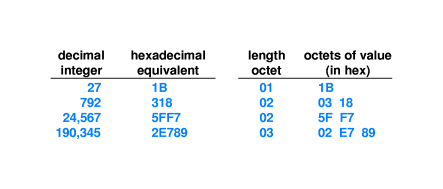(rev. 01/26/2008)
Notes On Chapter Thirty-Nine
-- Network Management (SNMP)
- 39.1 Introduction
- Software that network administrators use to
monitor and control network devices.
- 39.2 Managing An Internet
- The manager works to detect and correct problems.
- The networks often have large numbers of devices and software
components of widely differing type and manufacture.
- 39.3 The Danger Of Hidden Failures
- Devices and protocols may partially mask and
compensate for intermittent failure (e.g. as TCP does by
retransmitting).
- Nonetheless failures in network
hardware and software tend to reduce effective
network bandwidth and increase delay.
- 39.4 Network Management Software
- Use net management software to monitor and
control:
- hosts
- routers
- switches
- bridges
- Determine status
- Obtain statistics (example: number of
dropped or scrambled packets)
- Control devices (examples: change
routes, or configure a network interface)
- 39.5 Clients, Servers, Managers, And Agents
- Much software used for network management follows the familiar
client/server paradigm, however in this context
client = manager and server = agent.
- The agents run on the devices that are
monitored.
- 39.6 Simple Network Management Protocol
- The current standard protocol for internet
management is Simple Network Management Protocol, version 3
(SNMPv3).
-
 SNMP defines:
SNMP defines:
- the format of requests that a manager sends to an agent,
- the format of replies that an agent returns,
- the exact meaning of each possible request and reply,
- the language, Abstract Syntax Notation.1 (ASN.1) in which SNMP
messages are to be encoded.
- 39.7 Fetch-Store Paradigm
- SNMP implements a fetch-store paradigm under which fetch
commands are used to monitor devices and store commands are used to
control devices.
- 39.8 The MIB And Object Names
- The set of all objects that SNMP can access is
known as a Management Information Base (MIB). Specification
of MIB variables is separate from SNMP.
- 39.9 The Variety of MIB Variables
- Separate specification of MIB variables
provides flexibility for new variable definitions as needed.
- There are MIB variables for UDP, TCP, IP, ARP, Ethernet, bridges,
switches, and printers.
- 39.10 MIB Variables That Correspond To Arrays
- 39.11 Summary
 SNMP defines:
SNMP defines: